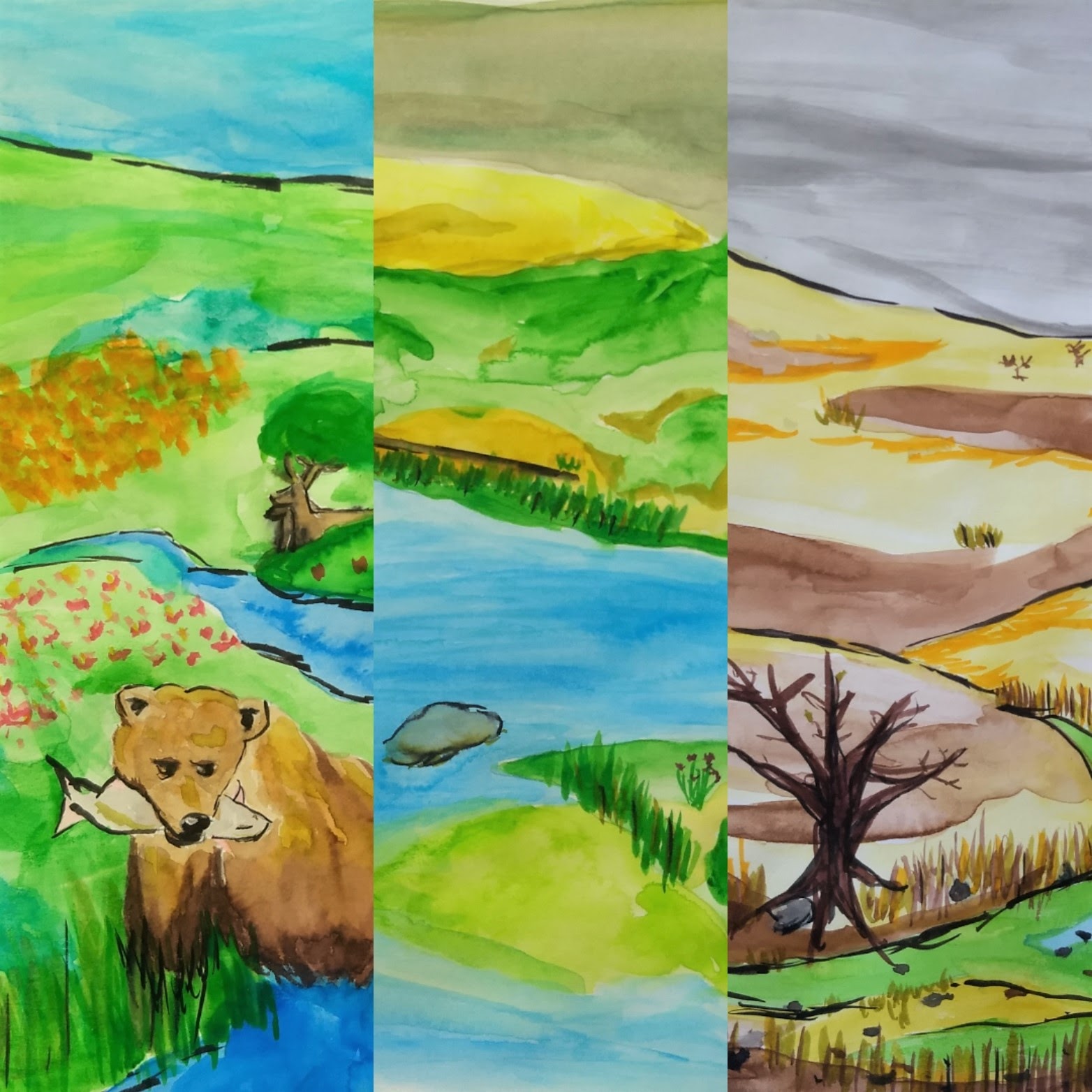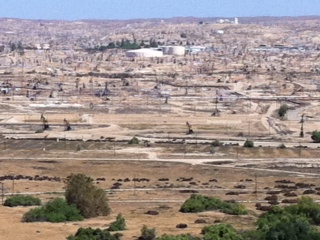
A Creative Perspective on the Delta

Scientists, artists, and environmental advocates convened virtually at the 11th Biennial Bay-Delta Science Conference last week to present and share the best possible science for environmental decision-making in the San Francisco Bay-Delta system. Participants explored a range of topics—including salmon management, aquatic vegetation, hydrology, and climate change—through panel discussions, presentations, posters, and artwork.
The event featured a wide array of unique and compelling artwork—including drawings of the region’s microorganisms and a salmon habitat constructed from gingerbread. A watercolor series depicting the Delta tunnel in the past, present and future, painted by our very own water organizer, Caty Wagner, was a highlight.
The series depicted, century by century, how human-caused environmental degradation and climate change has already transformed, and could continue to change, the region, if the proposed Delta Conveyance single tunnel project were to be built.
Wagner depicted the Delta region in 1821 as a lush landscape with clear skies, grey wolves, California grizzly bears, and sandhill cranes. In the era before the migration of European settlers, waters in the Delta were bountiful from the Sierra Nevada snowpack, and free of pesticides, nitrates, and other runoff from roads and farms.
The watercolor depicting the Delta today, in 2021, shows a sky that is smoggier, hills that are dryer from the hottest years on record, fewer birds and animals, and water that is rife with toxic algae due to reduced water flows from dams and exports.
The 2121 watercolor imagines what the Delta region could look like a century from now, if the Delta Conveyance single tunnel project were to be built through the region. Water flow would be vastly reduced, leading to salmon extinction, more-stagnant water, and more severe harmful algal blooms. Climate change has increased the frequency and severity of wildfires, and significantly reduced the available snowmelt used to feed Delta waters.
Sierra Club California is fighting to prevent the 2021 vision of the Bay Delta. The tunnel would produce no new water, would degrade existing water quality, and would dramatically impact the habitats that fish and wildlife in the region rely on. We are in conversation with water district representatives and are educating the public. Join us in the fight.
Click here to see what you may have missed at the conference.

The California Senate Natural Resources and Water Committee will vote on Tuesday, April 13th, on SB 47— legislation authored by Senator Monique Limón to increase funding for plugging abandoned oil wells in California.
California has a massive idle-deserted oil well problem. As the fossil fuel industry declines, oil operators are increasingly abandoning their responsibility to decommission and remediate oil wells, and passing along this cost to state taxpayers.
Almost 70,000 wells in California are at risk of being deserted because they are either idle or economically marginal. More than 5,500 wells are already deserted or have no viable operator.
In 2018, a California Council on Science & Technology (“CCST”) report estimated it would cost about $5.8 billion to remediate all idle, economically marginal, and deserted wells.
These deserted wells are a risk to public health and the environment. Deserted wells can leak, degrading air quality and contaminating aquifers and drinking water, and endangering the health of surrounding communities. Plugging and abandoning these deserted wells is necessary to protect the health and safety of Californians and the environment.
Starting next year, the California Geologic Energy Management Division’s (“CalGEM”) budget for remediating deserted wells will drop from $3 million per year to $1 million. This funding, which is sourced from the oil industry, is completely insufficient for California to respond to the estimated 5,540 deserted wells across the state. Plugging and abandoning two deserted wells in Echo Park alone cost CalGEM over $1 million.
SB 47 will help address California’s deserted oil well crisis by authorizing CalGEM to spend up to $10 million a year on plugging and abandoning deserted oil wells. Allowing CalGEM to use more funds from the oil industry to plug deserted wells will ensure that these costs are not passed along to taxpayers.
Sierra Club Califonia and our allies will be calling in on Tuesday to urge our California leaders to vote YES on SB 47, and we encourage our members to do the same.
Call-in information can be found on the Committee’s website.
Follow Us:
  |
Thank you for being a part of our work! Consider making a monthly donation. You may securely donate online or by sending a check to Sierra Club California at 909 12th Street, Suite 202, Sacramento, CA 95814.
